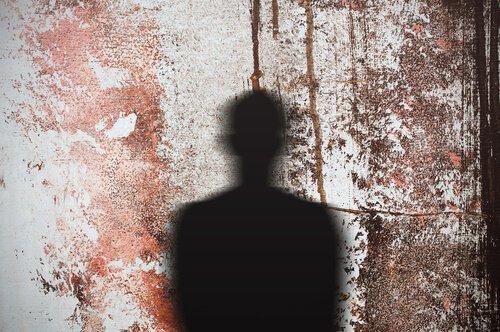Learn All about Genovese Syndrome

Genovese syndrome is a term we use to describe the psychological phenomenon where, instead of helping, people are paralyzed in urgent situations when people need their help in the face of some kind of danger. That sounds really strange, doesn’t it?
The name “Genovese syndrome” comes from a crime that happened in the USA in 1964, when a man stabbed a woman named Kitty Genovese in front of her apartment in front of dozens of witnesses. No one did anything to help.
It came as such a shock that social psychology has been trying to find a reason for it since 1968. Why didn’t any of those people help her? The research reached a sad conclusion. The more witnesses there are to a crime or a dangerous event, the less likely they are to help and vice versa. The fewer the witnesses, the better your chances.

Genovese syndrome
Kitty Genovese’s murder happened on March 13th, 1964, in New York. There have always been examples of the solitude of people who live in big cities, and how little interest they have in each other. But this case was an uncomfortable symbol of the dark side of that apathy that’s so common in big cities.
The Facts Surrounding Genovese syndrome
According to the police report, this is how things happened: Kitty Genovese was on her way home after a long work day. She parked close to her apartment. When she got out of her car, a man ran up to her and stabbed her twice in the back.
Her cries for help were drowned out in the solitude of the night. No one nearby tried to do anything to help her. A few minutes later, her attacker fled the scene, leaving her there wounded.
After a few more minutes went by, the attacker came back to the scene and found her lying on the floor in the entryway to her apartment building. Then, he continued stabbing her for nearly another half hour.
A few minutes after the attack finally ended, a witness called the police. By the time the EMTs arrived, it was too late to save Kitty Genovese’s life. She died in the ambulance on her way to the hospital.
Genovese’s Attacker
They managed to track down her attacker, Winston Moseley, a few days later. He was a mechanic with a wife and three kids. Put under pressure by the police, he confessed not only to the murder of Kitty but also of two other women.
His psychiatric evaluation showed that he had necrophiliac tendencies and had an antisocial personality. He was sentenced to life without parole for these murders.
Genovese’s murder caused a major commotion in the country, and immediately became a controversial topic. The biggest controversy of all came when the public learned there had been at least 38 witnesses to at least some portion of the attack.
At least 38 people saw what was happening to her, but not a single one of them did anything to try to help her. No one even called the police until after the attack ended. But why? Why didn’t anyone do anything?
If you leave psychology aside for a moment and think only about what happened, you might doubt about the kind of society we’ve created, the values we’ve built, and what values we’ve forgotten.

Diffusion of Responsibility
Kitty Genovese’s story caused a genuine stir and led to countless psychological and psychosocial studies. John Darley and Bibb Latané studied the case down to its most minute details and developed the diffusion of responsibility phenomenon.
This phenomenon is related to Genovese syndrome or bystander effect. In simple terms, it basically says that it’s less likely for someone to help you in a crisis if there are more people around, rather than just them.
The basic idea of this phenomenon is that people who witness events tend to assume that someone else will intervene. But the problem is that when everyone assumes that, no one does anything. That was the conclusion the two scientists reached with their fascinating social study.
Here are some of the phenomenon’s foundations:
- The fact that everyone there can see that no one else is helping.
- That they think there’s always someone more qualified than them to help the victim.
- That they feel insecure or embarrassed at the thought of stepping in with so many people around to see it.
Conclusion
Before we go, we just want to point out that when you think about what this phenomenon means, you should get a sense of just how dangerous it can be for us to be passive.
If, as citizens of the world, we aren’t conscious of this fact and do nothing to fight it, any one of us could end up in this situation, where we’d do nothing to help someone in need.
Genovese syndrome should serve as a lesson about the social situations you can improve so that we never allow terrible things like this to happen again.
All cited sources were thoroughly reviewed by our team to ensure their quality, reliability, currency, and validity. The bibliography of this article was considered reliable and of academic or scientific accuracy.
- Gallegos, W. A. (2015). Conducta prosocial y psicología positiva. Avances en Psicología, 23(1), 37-47.
- J. M. Darley & B. Latane. (1968). Bystander intervention in emergencies: Diffusion of responsibility. Journal of Personality and Social Psychology 8, 377-383.
- Manning, R., Levine, M., & Collins, A. (2007). The Kitty Genovese murder and the social psychology of helping: The parable of the 38 witnesses. American Psychologist, 62, 555-562.
This text is provided for informational purposes only and does not replace consultation with a professional. If in doubt, consult your specialist.








